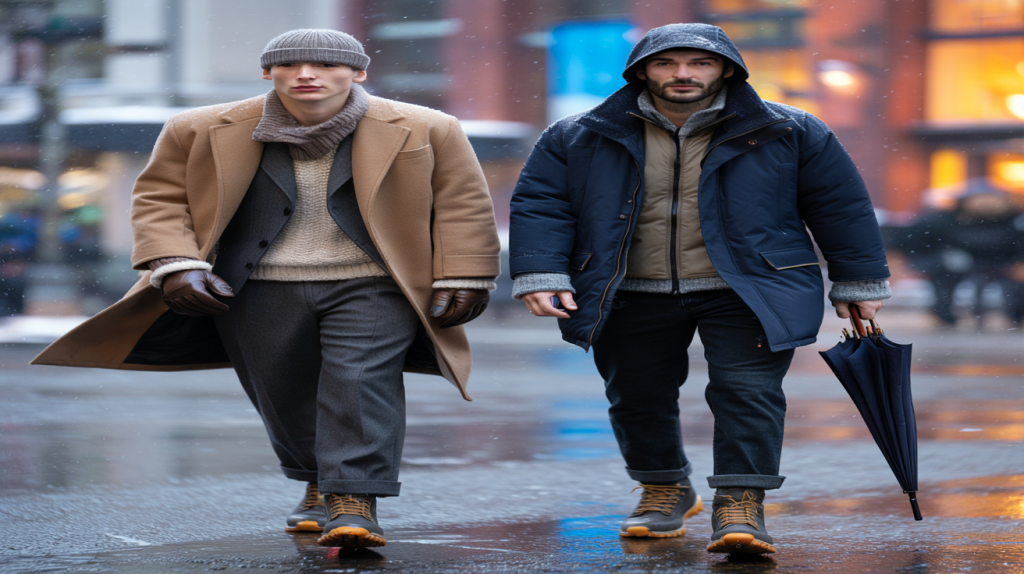Build a winter-ready wardrobe fast: the right layers, smart materials, and must-have pieces backed by data. Style secured, warmth guaranteed.
Cold snap, no panic: here’s what actually keeps you warm and stylish
First frost arrives, and closets start to wobble. The winning move is not buying more, it is choosing better: a tight set of winter essentials that trap heat, fight wet weather, and look good from Monday commute to Sunday stroll.
This guide goes straight to the point. The right coat, proper layers, and weatherproof accesories make the difference. Materials matter too, with a few science-backed choices separating cozy from clammy.
Layer smarter: base, mid, shell, then add personality
Everything starts at skin level. A breathable base layer wicks sweat so you stay dry when the temperature swings. Merino wool shines here, as the International Wool Textile Organisation reports wool can absorb up to 30% of its weight in moisture without feeling wet, keeping the microclimate stable in stop‑and‑go days.
Mid layers build loft. Fleece or a light down gilet traps still air, which is the real insulator. Down clusters are mostly air by volume, around 90% according to Allied Feather and Down, which explains why a thin, lofty piece can feel warmer than a bulky knit that does not breathe.
The shell seals the deal. A water‑resistant or waterproof coat shields from wind and drizzle so the warmth you created stays put. Look for taped seams, high collars, and cuffs that cinch. Then add texture and color on the outside, because winter style reads in layers, not in single pieces.
The must-have winter fashion pieces
To simplify choices, build around a compact winter capsule. It covers city, office, and weekend without dead weight.
- A tailored wool coat for work days
- An insulated puffer for wet, windy commutes
- A waterproof boot with grippy sole
- Merino base top and leggings for cold snaps
- A chunky knit in wool or alpaca
- Thermal socks that fit your shoes, not bunchy
- A fleece or light down vest as a modular mid layer
- A beanie that covers ears and a scarf that seals the collar
- Leather or insulated gloves with screen‑friendly fingertips
- Wool trousers or lined denim for off‑duty warmth
- A weatherproof parka if winters are wet where you live
- A compact umbrella for city days when a hood is not enough
Real-world details that change everything
Small choices deliver big comfort. Choose a coat long enough to cover the blazer hem, so wind does not tunnel up the back. Boots need space for thicker socks, yet must hold the heel to avoid blisters when pavements get slippery. Scarves work best when tucked under the lapel to stop drafts at the neckline.
Materials come with receipts. Extending the active life of garments by nine months can cut carbon, water, and waste footprints by 20 to 30 percent, according to WRAP’s “Valuing Our Clothes” research (2012, updated 2017). Translation for winter wardrobes: buy versatile, repair buttons, and rotate soles. It pays back in warmth and budget.
Care also matters. A University of Plymouth study in 2016 measured up to 700,000 microfibers released in a single domestic wash from synthetic garments. Wash colder, use a delicates bag, and air dry when possible to keep layers performing longer while reducing shedding.
Ethics can align with performance. The Responsible Down Standard, created with Textile Exchange in 2014, gives transparency from farm to factory. For wool, look for certifications that track animal welfare and land management. Clear labels make smart picks faster on busy days.
How to assemble a winter capsule that actually works
Start with your week, not with a trend. Count outdoor walking minutes, average office temperature, and the wetness of your climate. This reveals your anchors: a serious coat if wind bites, or waterproof footwear if rain wins most weeks.
Then plug gaps in order of impact. First the outer layer that faces weather, second the base layer that handles sweat, third the mid layer that boosts loft on demand. This sequence avoids duplicates and keeps style coherent across outfits.
Fit is the quiet superpower. A base layer that sits close without squeezing, a mid layer with room at the shoulders, and a shell sized to stack them without strain. When these three lock together, heat stays in and bulk stays out.
If budget is tight, use the 80-20 rule. Two high leverage purchases transform everything else: a weatherproof coat and boots with traction. Add a merino base top as soon as possible. The rest can rotate from what is already in the closet, then upgrade piece by piece as seasons turn.
Care routine closes the loop. Brush wool, steam between wears, and rest shoes on cedar. Rotate two scarves to vary texture and color while your core pieces stay steady. Function first, then flair, and winter turns from obstacle to playground.
